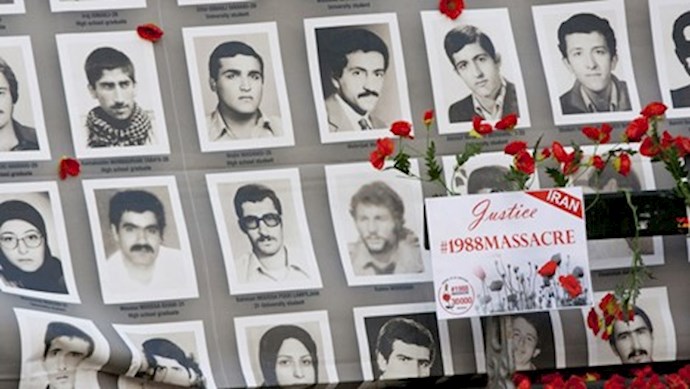Analysis by PMOI/MEK
Iran, April 27, 2021—In yet another crime, the Iranian regime is preparing to destroy the Khavaran burial site in Tehran. In 1988, the regime carried out a mass purge of prisons across the country, executing more than 30,000 political prisoners in the span of a few months and secretly burying them in mass graves. Khavaran was one of the several sites where the executed prisoners were buried.
By destroying these mass graves, the regime’s aim is to destroy evidence of one of the most horrific crimes against humanity after World War II. The regime has already destroyed several mass graves in other cities, including the Behesht-e Reza Cemetery in Mashhad and Vadi Rahmat Cemetery of Tabriz. The regime also cemented a mass burial site in Ahvaz, ostensibly to build a boulevard. Now it is planning to destroy the most prominent evidence of the 1988 massacre, the Khavaran burial site.
The regime has only managed to maintain its hold on power through brutal repression, genocide, and the massacre of opposition members. The regime has never been clear about the 1988 events in Iran’s prisons and has repeatedly rejected all the calls from international organizations such as Amnesty International since 1991 to clarify the fate of political prisoners.
Many regime officials who are in key positions today were directly involved in the massacre. Those include the current Judiciary Chief Ebrahim Raisi, former Justice Minister Mostafa Pourmohammadi, and the current Justice Minister Alireza Avai. They were all members of the “Death Commissions,” a trio of officials that acted as judges and sent thousands of prisoners to the gallows after minutes-long trials.
On the 30th anniversary of the 1988 massacre, Amnesty International described this genocide is an “ongoing crime against humanity.”
Destroying the evidence also shows regime authorities are terrified about the prospect of being held accountable and punished for their crimes when the truth comes to light. Otherwise, there was no reason for the regime to allow another international scandal to take shape surrounding its secrecy and coverup of the 1988 massacre. This fact is further driven by the fact that this case is closely monitored by many United Nations experts and international organizations. Back in September, six UN human rights experts issued a detailed letter demanding clarity on the fate of thousands of Iranian political prisoners executed in 1988.
For three decades, the 1988 massacre was overshadowed by the appeasement policy of western governments toward the Iranian regime. In this regard, Maryam Rajavi, the president-elect of the National Council of Resistance of Iran (NCRI), said on April 26, “One of the most harmful consequences of the policy of appeasement was providing impunity to the ruling murderers, whose crimes started in the early 1980s, reached new heights during the 1988 Massacre and have continued to this day.”
In 2016, Mrs. Rajavi launched the campaign “Call for Justice for the victims of the 1988 massacre,” which until today has received the attention of many international human rights organizations and experts such as Amnesty International and UN special rapporteurs. The mass executions of political prisoners in 1988 has also been mentioned in several reports by the United Nations Secretary General to the General Assembly. A large bi-partisan group in various European parliaments the United States Congress has also raised concern about the fate of thousands of victims of the 1988 massacre. A recent resolution supported by the majority of the U.S. Congress called the 1988 massacre “a crime against humanity.”
In the last 42 years, the mullahs have executed 120,000 political prisoners and members and sympathizers of the People’s Mojahedin Organization of Iran (PMOI/MEK). These horrific crimes can’t be forgotten and nor be forgiven or covered up. The blood of the victims and martyrs of the 1988 massacre is deeply rooted in Iran’s society.
Sooner or later, all the criminals and those who the blood of Iran’s freedom fighters on their hands will be brough to justice, as has been the case with all dictators and tyrants in history.





